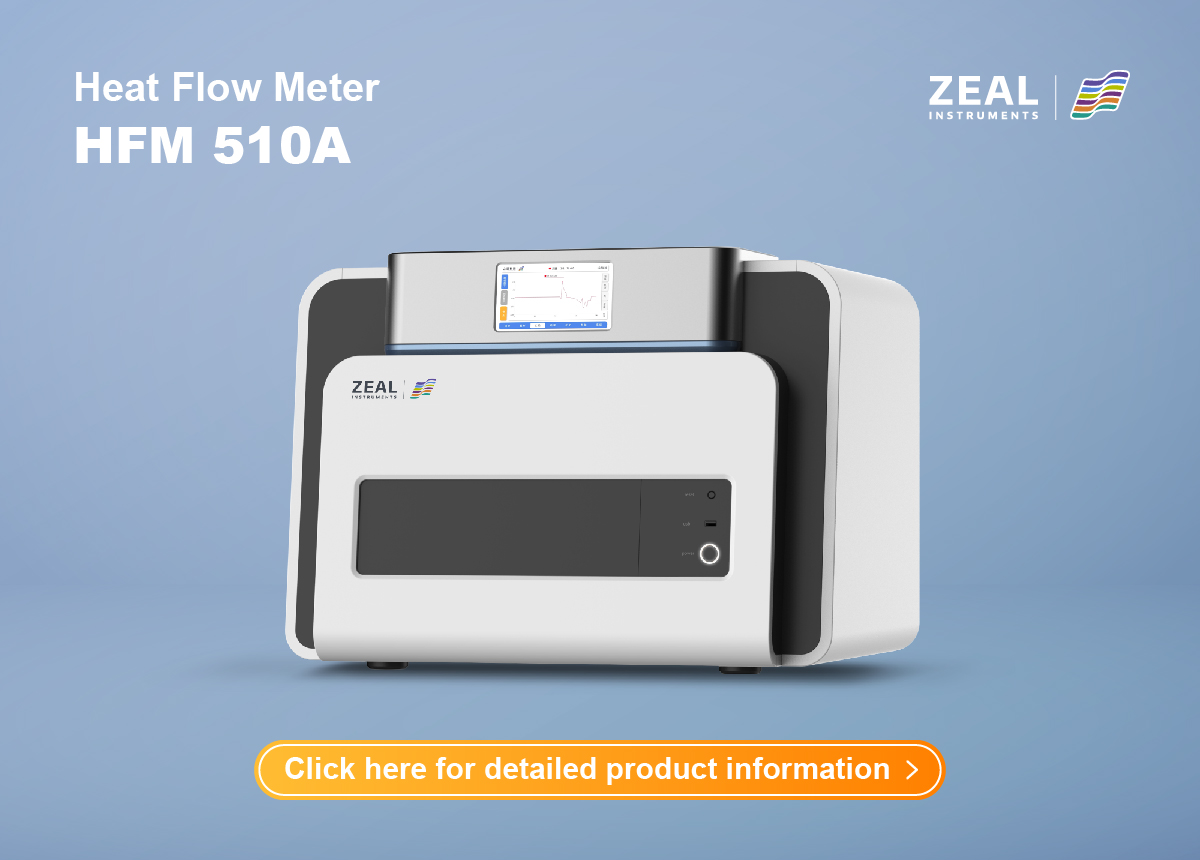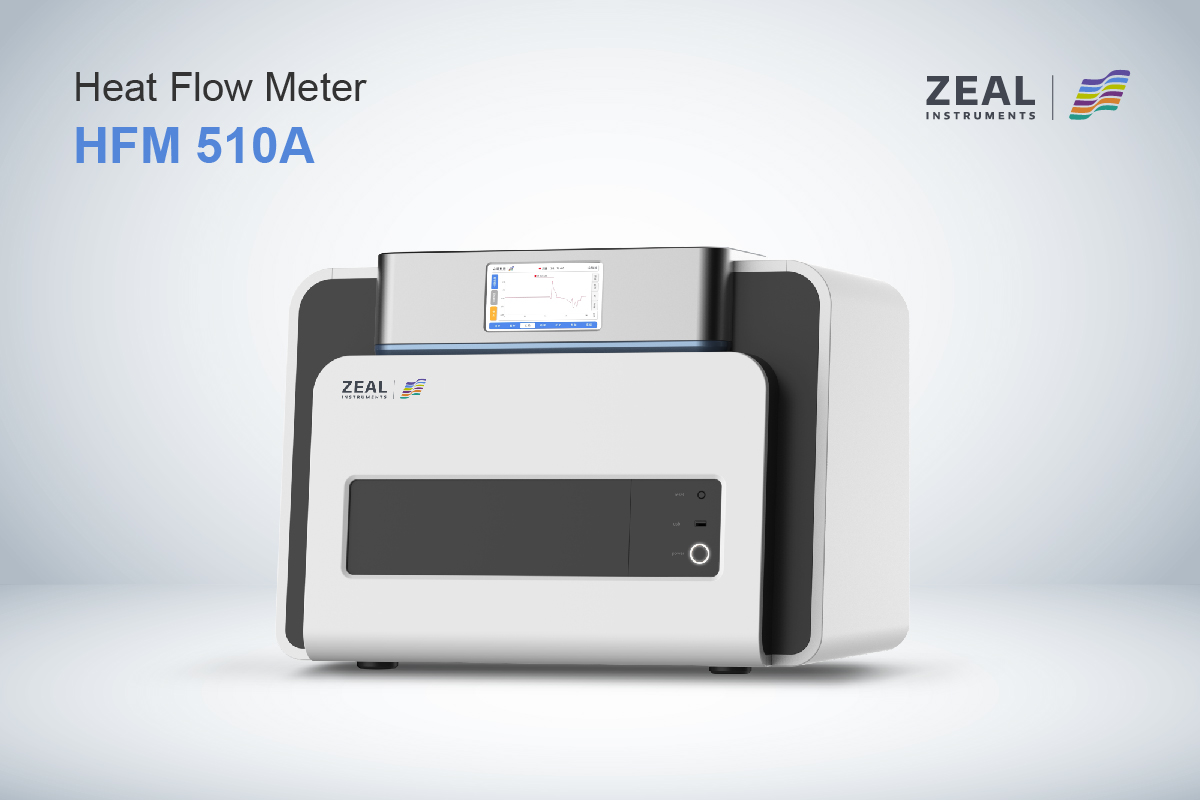Heat Flow Meter: How It Works and Its Applications
The heat flow meter is an essential tool used in various industries to measure the thermal conductivity of materials. It is a device that measures the rate of heat transfer through a material. The heat flow meter is used to determine the thermal conductivity, thermal resistance, and thermal transmittance of various materials, including insulation products, construction materials, packaging, and assemblies.
The principles of heat flow are based on Fourier’s law, which states that the rate of heat transfer through a material is proportional to the temperature difference across the material and the area through which the heat is transferred. The heat flow meter design is based on the steady-state method, which measures the temperature difference across the material and the heat flux through the material. The heat flux is measured using a thin-film heat flux transducer, and the temperature difference is measured using thermocouples.
The heat flow meter is used in various applications, including building insulation, refrigeration, and electronics. It is also used in the automotive industry to measure the thermal conductivity of engine components. The heat flow meter is an essential tool in ensuring that materials meet industry standards and compliance regulations.
Key Takeaways
- Heat flow meters measure the thermal conductivity, thermal resistance, and thermal transmittance of materials.
- The design of heat flow meters is based on the steady-state method, which measures the temperature difference and heat flux through the material.
- Heat flow meters are used in various applications, including building insulation, refrigeration, and electronics.
Principles of Heat Flow
Heat flow meter is a device that measures thermal conductivity and steady-state heat transfer in materials. Understanding the principles of heat flow is important to understand how this device works.
Thermal Conductivity
Thermal conductivity is a measure of how well a material conducts heat. It is defined as the amount of heat that flows through a unit area of a material in a unit time when there is a unit temperature difference between the two surfaces of the material. The thermal conductivity of a material depends on its composition, structure, and temperature.
Steady-State Heat Transfer
Steady-state heat transfer is a condition where the rate of heat transfer into a material is equal to the rate of heat transfer out of the material. This condition is reached when the temperature of the material remains constant over time. In steady-state heat transfer, the temperature difference between the two surfaces of the material is constant.
Heat flow meter measures the rate of heat flow through a material in steady-state conditions. It consists of a plate-shaped measuring device that is located between the material sample and the temperature-controlled plates. The temperature difference between the plates is fixed, and the rate of heat flow through the sample is determined by measuring the temperature difference across the measuring device. The thermal conductivity of the material is then calculated using the measured rate of heat flow and the thickness of the sample.
In summary, heat flow meter measures thermal conductivity and steady-state heat transfer in materials. Thermal conductivity is a measure of how well a material conducts heat, while steady-state heat transfer is a condition where the rate of heat transfer into a material is equal to the rate of heat transfer out of the material.
Heat Flow Meter Design
The design of heat flow meters is based on the principle of heat transfer through a sample material. The heat flow meter consists of two plates, one heated and one cooled, between which the sample material is placed. The heat flow meter measures the rate of heat flow through the sample material, which is proportional to the thermal conductivity of the material.
Sensor Technology
Heat flow meters use different types of sensor technology to measure the rate of heat flow through the sample material. One common type of sensor is the heat flux sensor, which measures the heat flux through the sample material. Another type of sensor is the thermocouple, which measures the temperature difference across the sample material. The choice of sensor technology depends on the specific application and the accuracy required.
Calibration Methods
Calibration of heat flow meters is important to ensure accurate measurements. Calibration methods include the use of reference materials with known thermal conductivity values, or the use of mathematical models to simulate the heat transfer through the sample material. The calibration process should be performed periodically to ensure accurate measurements over time.
Overall, the design of heat flow meters is simple yet effective, allowing for accurate measurement of thermal conductivity in a wide range of materials. By understanding the principles of sensor technology and calibration methods, you can ensure that your heat flow meter provides accurate and reliable measurements for your specific application.
Measurement Techniques
There are two main techniques for measuring thermal conductivity using Heat Flow Meter: Transient Method and Guarded Hot Plate.
Transient Method
In the Transient Method, a heat source is applied periodically or in a pulse to the sample, and the temperature change is measured over time. The heat flow meter measures the rate of heat flow through the sample, and the thermal conductivity is calculated using Fourier’s Law.
This method is useful for measuring the thermal conductivity of materials with low thermal conductivity, such as insulation materials. It is also faster than the Guarded Hot Plate method, but it can be less accurate.
Guarded Hot Plate
The Guarded Hot Plate method involves placing a sample between two plates, one of which is heated and the other cooled. The temperature difference between the plates and the rate of heat flow through the sample are measured. The thermal conductivity is then calculated using Fourier’s Law.
This method is more accurate than the Transient Method, but it is also more time-consuming. It is typically used for measuring the thermal conductivity of materials with higher thermal conductivity, such as metals.
Using either method, the Heat Flow Meter provides accurate and reliable measurements of thermal conductivity.
Applications of Heat Flow Meters
Heat flow meters are used in a variety of applications to measure the thermal properties of materials. In this section, we will explore the two most common applications of heat flow meters: building materials and insulation testing.
Building Materials
Heat flow meters are commonly used in the construction industry to measure the thermal properties of building materials. This information is critical for defining the energy efficiency and thermal performance of buildings. By measuring the thermal conductivity of building materials, architects and engineers can design buildings that are more energy-efficient and cost-effective.
Heat flow meters can be used to measure the thermal conductivity of a wide range of building materials, including concrete, brick, and wood. This information is critical for determining the insulation requirements of a building and for selecting the most appropriate building materials.
Insulation Testing
Heat flow meters are also used to test the thermal resistance and thermal conductivity of insulation materials. This information is critical for determining the energy efficiency and thermal performance of insulation products.
By measuring the thermal conductivity of insulation materials, manufacturers can design products that are more energy-efficient and cost-effective. Heat flow meters can be used to test the thermal conductivity of a wide range of insulation materials, including fiberglass, foam, and cellulose.
In addition, heat flow meters can be used to test the thermal resistance of insulation materials. This information is critical for determining the insulation requirements of a building and for selecting the most appropriate insulation products.
Overall, heat flow meters are an essential tool for measuring the thermal properties of materials. Whether you are designing a building or testing insulation products, heat flow meters can provide accurate and reliable data that is critical for ensuring energy efficiency and thermal performance.
Standards and Compliance
When it comes to Heat Flow Meters, there are a few important standards and protocols that you should be aware of to ensure accurate and reliable results. Here are two of the most important ones:
ISO Standards
The International Organization for Standardization (ISO) has published several standards related to Heat Flow Meters, including ISO 8301:1991 and ISO 12667:1999. These standards specify the methods for measuring thermal conductivity and thermal resistance using Heat Flow Meters and provide guidelines for ensuring accurate and reliable results. If you are using a Heat Flow Meter in your work, it is important to follow these standards to ensure that your measurements are valid and comparable to those made by others in the field.
ASTM Protocols
The American Society for Testing and Materials (ASTM) has also developed several protocols related to Heat Flow Meters, including ASTM C518-17 and ASTM C177-13. These protocols provide detailed instructions for using Heat Flow Meters to measure the thermal properties of materials, including thermal conductivity and thermal resistance. They also provide guidelines for ensuring the accuracy and reliability of your measurements, including recommendations for calibration and testing procedures.
In addition to these standards and protocols, there may be other regulations or guidelines that apply to your specific industry or application. It is important to stay up-to-date on the latest standards and regulations in your field to ensure that you are following best practices and producing accurate and reliable results.








































